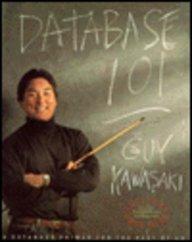Question
C PROGRAMMING LANGUAGE PLEASE HELP! MUCH APPRECIATED. x86-64 Assembly Cycle Count Tool you are going to write a small parser in C that counts the
C PROGRAMMING LANGUAGE PLEASE HELP! MUCH APPRECIATED.
x86-64 Assembly Cycle Count Tool
you are going to write a small parser in C that counts the number of instructions and counts how many instructions are needed to run that program from top to bottom.
As an example, if an assembly program had the following code:
# assembly.s program MOVQ a, %rax MOVQ b, %rbx ADDQ %rbx, %rax IMULQ %rbx MOVQ %rax, c
Your goals: Your tool.c will report a summary of the total Instructions(i.e. ADD, MOV, IMU, etc.) found given an input file. Additionally, you will estimate the total cycles needed for hardware to execute this code.
Below is an example of a correct output your program
ADD 1 MOV 3 IMUL 1 Total Instructions = 5 Total Cycles = 6
Specifications for tool.c
- Your tool should read in a file name through the command line arguments for what file is being analyzed
- You will run your program with: ./tool barbones.s on the command line.
- (hint, investigate what argc and argv are for how to read in barebones.s as input to your program).
- barebones.s is provided to be used as an example input file for your tool.
- You will modify a file called tool.c which you will implement your tool in.
- At the very least, your program should output counts for: ADD, SUB, MUL, DIV, MOV, LEA, PUSH, POP, RET.
- ADD counts as 1 cycle
- SUB counts as 1 cycle
- MUL counts as 2 cycles
- DIV counts as 4 cycles
- MOV counts as 1 cycle
- LEA counts as 1 cycle
- PUSH counts as 1 cycle
- POP counts as 1 cycle
- RET counts as 1 cycle
- i.e. For your analysis (and for the sake of simplicity), consider ADDQ, ADDB, ADDL, etc. each as adding to the 'ADD' instruction and cycle counts. IMUL is equivalent to MUL, IDIV is equivalent to DIV.
- You may ignore other assembly instructions (i.e. incq, decq that are not in the above list
- At the very least, your program should output counts for: ADD, SUB, MUL, DIV, MOV, LEA, PUSH, POP, RET.
barebones.s
# Build an executable using the following: # # clang barebones.s -o barebones # clang is another compiler like gcc # .text _barebones: .data .globl main main: # (1) What are we setting up here? # Ans: pushq %rbp # movq %rsp, %rbp # # (2) What is going on here # Ans: movq $1, %rax # movq $1, %rdi # leaq .hello.str,%rsi # # (3) What is syscall? We did not talk about this # in class. # Ans: syscall # Which syscall is being run? # Ans: # (4) What would another option be instead of # using a syscall to achieve this? # Ans: movq $60, %rax # (5) We are again setting up another syscall movq $0, %rdi # What command is it? # Ans: syscall popq %rbp # (Note we do not really need # this command here after the syscall) .hello.str: .string "Hello World! " .size .hello.str,13 # (6) Why is there a 13 here? # Ans:
TO DO:
A modified tool.c that reads in a file 'barebones.s' from the command line and:
- reports the correct number of instructions
- reports the correct number of cycles
Step by Step Solution
There are 3 Steps involved in it
Step: 1

Get Instant Access to Expert-Tailored Solutions
See step-by-step solutions with expert insights and AI powered tools for academic success
Step: 2

Step: 3

Ace Your Homework with AI
Get the answers you need in no time with our AI-driven, step-by-step assistance
Get Started


